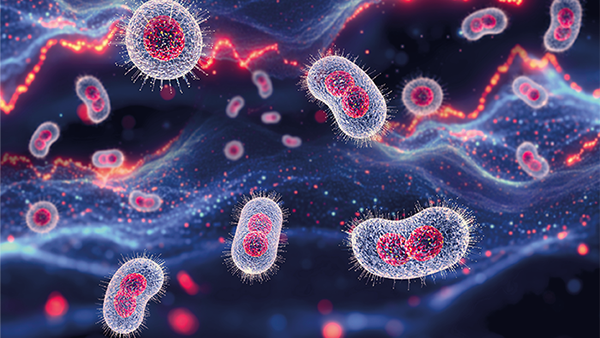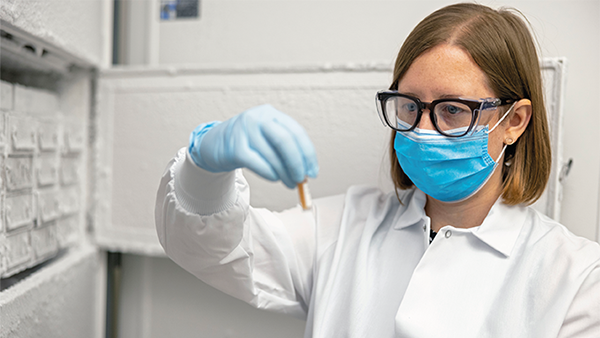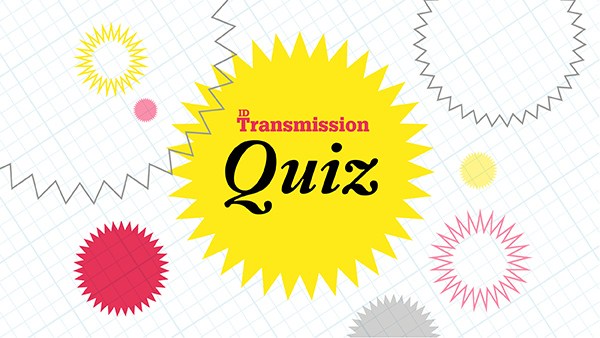Bitesized Breakthroughs – June 2023
From a bacterial cause of endometriosis to the rapid evolution of H5N1 avian influenza, we bring you the latest research and news
Behind the veil. To date, three people have been cured of HIV-1 following an allogenic CCR5Δ32/Δ32 hematopoietic stem cell transplantation (HSCT), but the mechanisms behind it remain unclear. In a recent study in macaques, researchers found that allogeneic immunity is the primary driver of reservoir clearance following allogeneic HSCT; moreover, in some people, additional protection from CCR5 deficiency was needed to prevent viral spread to donor CD4+ T cells (1).
Shifted thinking. Millions of women suffer from endometriosis worldwide, causing debilitating pain without a cure. The widely accepted cause of the disease is retrograde menstruation, but not all women who go through retrograde menstruation go on to develop endometriosis – prompting speculation of another contributing factor. New research shows Fusobacterium infection of the endometrium may contribute to the disease, which opens up potential new treatment options for endometriosis focused on eradicating infection (2).
Smallest patients. The FDA Advisory Committee has unanimously recommended Sanofi and AstraZeneca’s nirsevimab to protect infants against RSV-associated lower respiratory disease in their first RSV season (3). The committee also voted 19-2 in support of its favorable benefit-risk profile for children up to 24 months old who are still vulnerable going into their second RSV season. If approved, the single-dose antibody will be the first immunization developed for all infants in their first RSV season.
Seasonal suggestions. Speaking of the FDA, a briefing document released on June 15, 2023 states that COVID-19 vaccine developers should target XBB omicron subvariants for the upcoming vaccination season (4). FDA staff recommended that the US should use a monovalent vaccine that targets XBB.1.5, XBB.1.16, or XBB.2.3, which are the dominant strains currently circulating across the country.
Birds of a feather. An investigation into H5N1 avian influenza viruses of clade 2.3.4.4b has revealed insight into their rapid evolution as they spread to North America (5). Reassortment of the clade 2.3.4.4b viruses with viruses circulating in North American wild birds led to different combinations of ribonucleoprotein genes. These reassortant viruses are concerning due to their increased virulence and ability to target the mammalian central nervous system.
References
HL Wu et al., “Allogeneic immunity clears latent virus following allogeneic stem cell transplantation in SIV-infected ART-suppressed macaques,” Immunity, [Online ahead of print] (2023). PMID: 37236188.
A Muraoka et al., “Fusobacterium infection facilitates the development of endometriosis through the phenotypic transition of endometrial fibroblasts,” Sci Transl Med, 15, eadd1531 (2023). PMID: 37315109.
Sanofi, “Press Release: FDA Advisory Committee unanimously recommends nirsevimab as first immunization against RSV disease for all infants” (2023). Available at: bit.ly/3qRM8xK.
Food and Drug Administration, “Selection of Strain(s) to be Included in the Periodic Updated COVID-19 Vaccines for the 2023-2024 Vaccination Campaign,” (2023). Available at: bit.ly/3P9CYqI.
A Kandeil et al., “Rapid evolution of A(H5N1) influenza viruses after intercontinental spread to North America,” Nat Commun, 14, 3082 (2023). PMID: 37248261.





